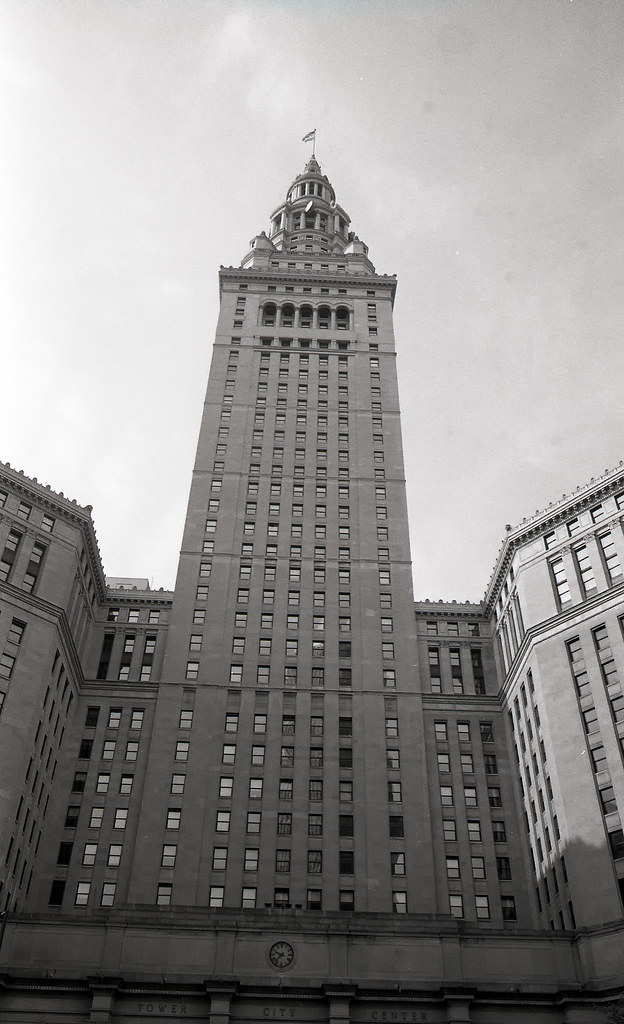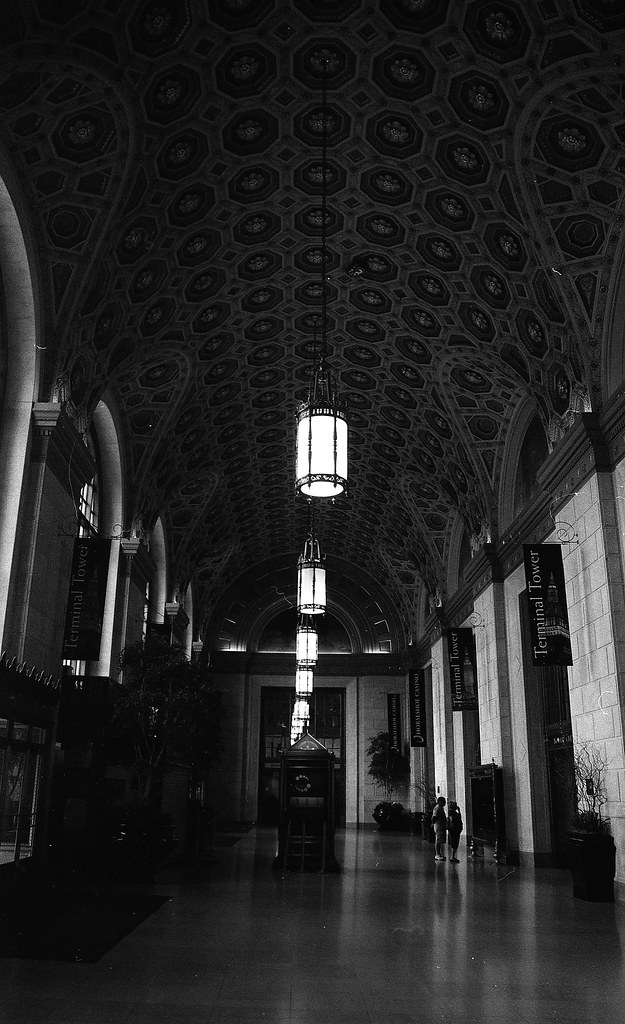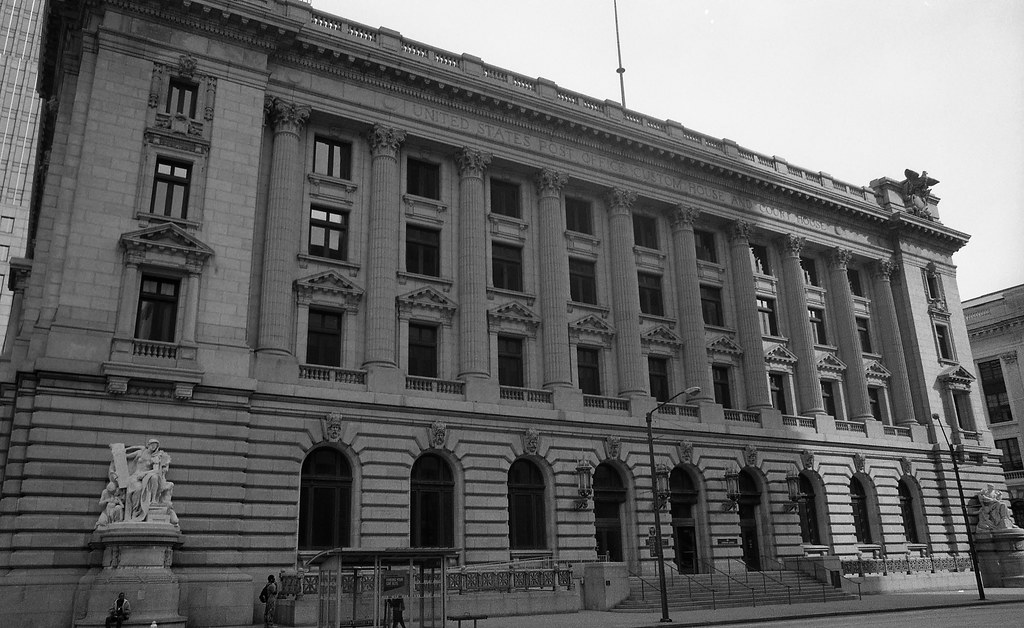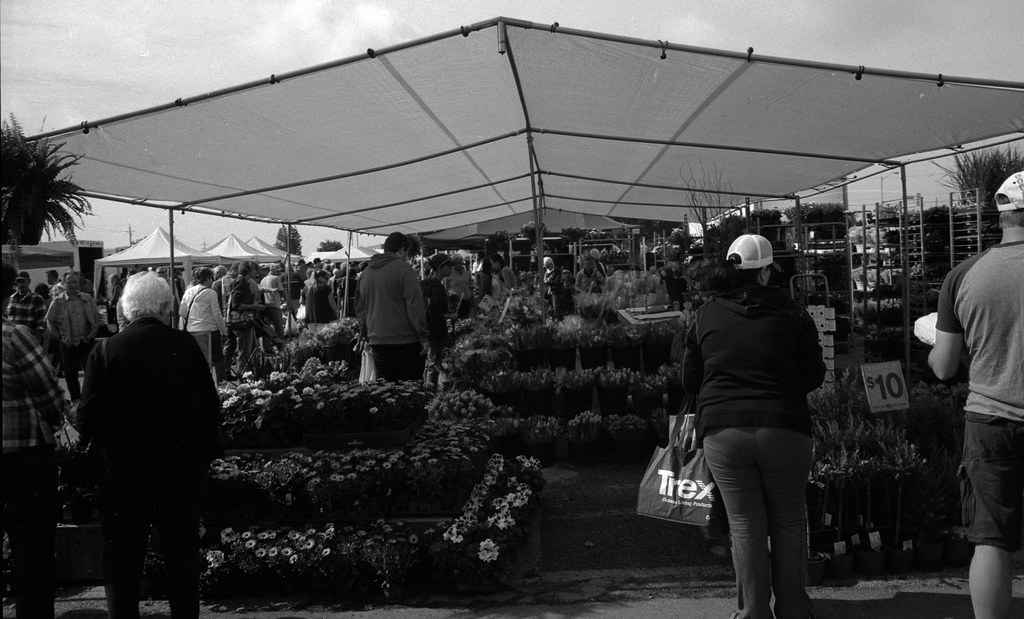When it comes to 35mm SLRs I’m solidly in the Nikon camp. Yet, Canon had something that could be considered an equal, if not a stronger camera for the 1970s than the Nikon offering of the time. That being the Canon F-1, Canon’s answer to the Nikon F2. Sadly the F-1 only lived a short time in my collection before going to a good friend who had a larger selection of Canon lenses. I know it went to a good home. But as a camera, the F-1 is an amazing performer and if I had more lenses it would have been a strong addition to the team. Thanks to the Bhati family for the kind donation of the camera.

Camera Specifications
Make: Canon
Model: F-1 or F-1n
Type: Single Lens Reflex
Format: 135 (35mm), 24x36mm
Lens: Interchangable, Canon FD-Mount
Shutter: Focal Plane Titatium Shutter, 1″ – 1/2000″ + Bulb
Meter: CdS Cell TTL Meter, EV3.5 – EV15 @ ASA-100, ASA-25 – ASA-3200
Year of Manufacture: F-1: 1971-1976, F-1n: 1976-1981


Background
Nikon changed the face of professional SLRs in 1959 with the release of the Nikon F, a true system camera. Canon had their own SLRs, the Canonflex that operated with the R-Mount lens, the first lens mount from Canon. The mount used a breach lock system and would set the standard. But Canon continued to produce their high-quality rangefinder, and Nikon took the lead in system cameras. But Canon watched, and began to make improvements, the R-Mount was superseded by the FL-Mount in 1964 and came with some improved SLRs. And when word of a new Nikon SLR came, Canon decided to not only build a competitor but a true rival to the F2. The Canon F-1 and the Canon FD-Mount were released in early 1971. The FD-Mount would use the same breach lock system but have dual mechanical linkages to the camera body that would allow for semi-automatic exposure setting using one lug and pin to communicate the aperture setting and another to allow for the camera to control lens aperture. The F-1 would be designed to not only work perfectly with the FD lenses but also work with the older FL-Mount lenses at least stopped down for metering. The F-1 was designed from the ground up to work with a meter, and Canon would seat the CdS cell next to the focusing screen so that no matter what finder is placed on the camera it would have a meter. As for accessories, Canon would produce four finders, four focusing screens, four motor drives, three backs (one of which was a 250-shot magazine), and a pile of lenses. One of the unique finders is the Servo EE, which provided semi-automatic shutter priority exposure functionality. For the 1976 Montreal Olympics, Canon produced a special edition of the F-1. The same year, Canon began to produce an updated model, the F-1n. The same year marked the release of the FDn update to the lens mount, which replaced the breech locking ring with a simple release button. In total thirteen changes were made on the F-1n. The film advance now featured a plastic tip and the offset increased to 30° and the stroke decreased to 139°. The meter sensitivity was increased to ASA-3200. The mirror was changed out to allow for more transmission of blue light resulting in a brighter viewfinder. The standard focusing screen changed from a Type A to a Type E, and an additional five screens were released. Canon would produce two special editions of the F-1n, a military version done in an Olive drab finish known as the Canon ODF-1 and in 1980 for the Lake Placid Olympics. Production of the F-1 showed that Canon could produce a strong system camera but through the 1970s the inclusion of electronics in cameras resulting in the popular A-Series. In 1981 the Canon F-1n stopped production and Canon revealed their radical redesign, the New F-1. But that is a camera for another review.


Impressions
I like the Canon F-1 as a camera, design-wise it is rather minimal. Each part is placed in the right spot, well laid out, and easy to reach. The camera is super heavy, but most professional cameras of the era weigh just as much. And every dial has a comfortable click or recognition of being set. Even without a manual, you can settle into basic operations of the camera. I actually prefer the layout of the F-1 to the Nikon F2, mainly because the F-1 did not need a special finder for metering. I’m lucky in the sense that the model I worked with is the F-1n. The finder is bright and the match-needle system is easy to see and clear. The simple fact is that the Canon F-1 is a beast, a great beast, and one that is begging to be used.


Experiences
The Canon F-1 begs and deserves to be used, and what a camera to use. Loading the camera is pretty simple and fast without needing the QL feature. The viewfinder is bight and bright, added only by the fact that I used the F-1n with the different mirror which granted the brighter finder. The match-needle is clear and easy to see and made metering a breeze, although I never had a functioning battery in mine. But since the camera is fully mechanical I just used Sunny-16 to do all the shooting. While the film advance is still a far throw, the F-1n is shorter and the plastic tip makes it a much more comfortable experience. Lens mounting which the twist-lock is a little annoying using the original FD lenses, but the newer FDn lenses are easy to use and far quicker. Now the camera is heavy, much heavier than my F2 even, and while it’s not too hard on you for a day’s worth of shooting, you will need a good strap. Unloading the film is just as easy as loading.


Optics
One of the selling points of the F-1 is the ability to use both the FD-Mount lenses and the older FL-Mount and R-Mount lenses. The F-1 was designed from the ground up to work fully with the FD lenses and can take advantage of the automatic mode function. Now to gain the shutter priority you do need to have the proper Servo EE finder. And the larger FD Lenses do look good, but you can easily use the FDn lenses on the camera on both the F-1 and F-1n. Now the breach lock mount will allow users to mount the FL and R Lenses. That said, metering can only be accomplished by stopping the lens down first.


Lowdown
If you’re wanting to get into professional cameras and have a pile of FD or FDn lenses then the F-1 is certainly worth your while. The F-1 or F-1n are excellent quality cameras built with a level of precision that you come to expect from Canon. I do recommend going with the newer F-1n as it has the advances that make it a little nicer to use, but the F-1 is no slouch either. Plus you can get your hands on a body for between 50 and 120 dollars on the used market. Lenses will vary based on the type, focal length, and speed, but again you can find a nice 50 f/1.8 for a fair deal at most major used dealers. Another important note is that the accessories for the F-1 and F-1n will not work on the New F-1 (F-1N) and vice-versa. There is the question of the battery, the F-1 is designed to take a mercury cell, but you can get a modern version or just use a standard silver oxide or alkaline and load film with a big of wiggle room. Or just run with an external meter or no meter at all as the camera does not need a battery to function. And while I went and gave my copy away and I don’t regret it, the F-1 would have been a strong addition to my kit had my journey went down the Canon road rather than Nikon.


Further Reading
Don’t just take my word on the Canon F-1, you can check out the reviews by other awesome camera reviewers!
Casual Photophile – Canon F-1 vs. FTb
Japan Camera Hunter – The Canon F-1
Film Photography Project – Canon F-1 Review
Cultured Kiwi – Canon F-1 where the War with Nikon Began
3 Comments